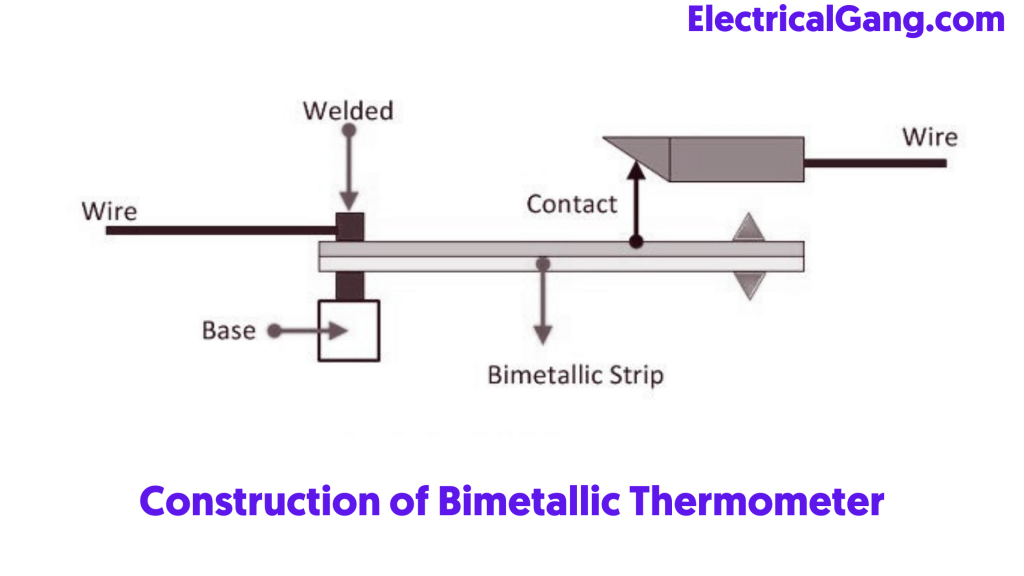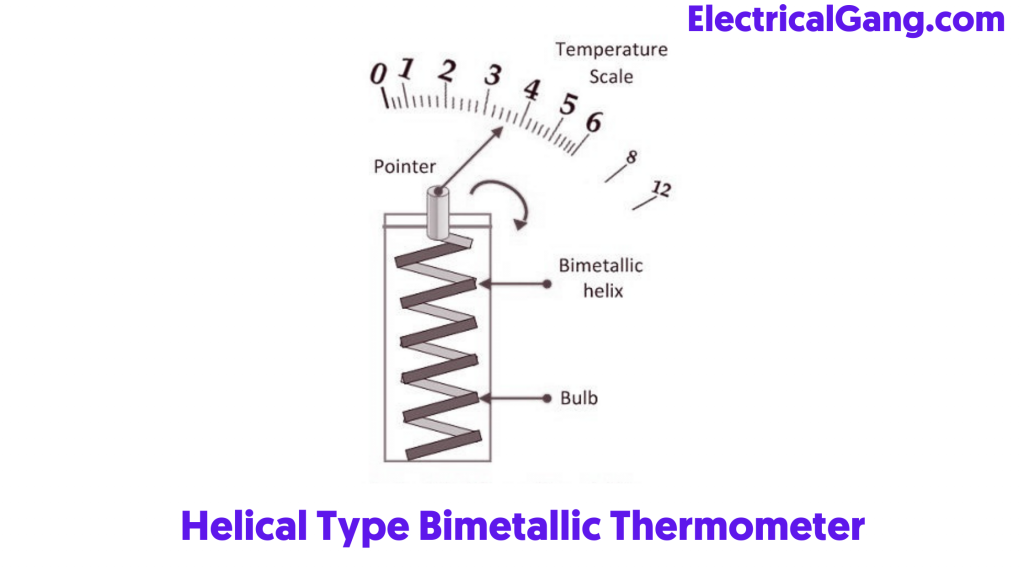
In the industrial economy and in everyday life we measure temperature somewhere. There are many businesses in our industries that are based on temperature. Industries like the food industry, paper industry, pharma industries, etc. use various sensing devices to measure the temperature in their business.
That is why thermometers are used to measure temperature. Because they are universal and affordable in price, they are widely used in industry and business. A thermometer is a mechanical device used to measure temperature rise in different applications using a different principle
Temperature is a very important item in the above industry as the temperature is more or less directly affected by the product. So today we will see in our article what is Bimetallic Thermometer, what is its construction, what is its working principle is, what are its types, etc. We will see information in today’s article.
Suggested Read: What Is DC Generator? | Types of DC Generator
What is a Bimetallic Thermometer?
A thermometer is a device that uses two different metal strips to convert temperature displacement into mechanical. The metals used in the thermometer are steel, copper, and brass. These strips are connected to each other and expand at different rates once heated.
This change will compare with the real i.e. reliable temperature and show the reading in the part of the meter next to it. These thermometers are low-cost, simple, strong, and durable as shown below.

Construction of Bimetallic Thermometer:

This thermometer is made using bimetallic stripes. Which is connected with the formation of various thermal expansion coefficients. As we mentioned above it is a mechanical device that can be used to enable switching mechanisms to achieve electronic output using mechanical action.

Various methods such as welding, bolting or riveting, and fastening are used to connect these two metal strips. This metal has no relative motion and this strip can be made from steel, copper, and brass, etc.
Suggested Read: What Is an Overload Relay? | The Definitive Guide
Working Principle of Bimetallic Thermometer:

The working principle of a bimetallic thermometer depends on two basic properties of temperature.
- The metal has the property of thermal expansion, i.e., the temperature-related metal expands and contracts.
- Not every metal has the same temperature coefficient. The expansion or contraction of metals at the same temperature is different.
Types of Bimetallic Thermometer:
The types of Bimetallic Thermometer are as follows:
| Sr.No | Types of Bimetallic Thermometers |
| #1. | Spiral Strip Type Bimetallic Thermometer |
| #2. | Helical Type Bimetallic Thermometer |
#1. Spiral Strip Type Bimetallic Thermometer:

This Bimetallic Thermometer uses a spiral bar. Such a thermometer is used to measure the ambient temperature. Thermal expansion of the metal occurs in spring with temperature variations due to its property. Indicators and dials attached to the spring, which show the change in temperature.
This type of design costs more but gives more work in less space. The main drawback of this system is that we cannot separate the temperature sensor as well as the dial-in. It is used to measure the temperature of the room and to determine the temperature in the refrigerator.
#2. Helical Type Bimetallic Thermometer:

Helical Type Bimetallic Thermometer is widely used in industries. In some cases, it is necessary to separate the pointer from the bimetallic coil. It is necessary to keep the temperature measuring sensor in the pipe and the temperature can be displayed on the outside of the pipe.
The bimetallic thermometer is made of a bimetal strip and wrapped in a helical coil. The helical bimetal is attached to one end of a measuring tube. A metal rod that can be rotated in the direction of a helical coil is attached to the other end.
In this thermometer, a pointer is attached to the top of the metal rod. The helical bimetal wind rotates to rotate the metal rod when the measuring tube is heated. The exact temperature will be read on a calibrated scale.
Suggested Read: Copper Earthing Strip | Specifications of Copper Earth Strip
How to Select a Bimetallic Thermometer?
The following points need to be kept in mind while choosing a bimetallic thermometer.
- The type of connection.
- Range of temperature.
- The size of the case or the dial.
- Length of capillary or stem.
Improper application can be detrimental to the thermometer. Failure to do so may result in loss of property as well as personal loss. When installing a thermometer it is important to observe the space around it as it determines what type of thermometer we need to use.
The various errors that occur when measuring temperature are issues of potential, conduction, radiation, noise, response time, and grounding.
Advantages of Bimetallic Thermometer:
The advantages of a Bimetallic Thermometer are as follows:
- The cost is low.
- Installation is easy.
- Simple and easy maintenance.
- There is a wide range of temperature measurements.
- Linear feedback.
- Hard and easy.
Disadvantages of Bimetallic Thermometer:
The disadvantages of a Bimetallic Thermometer are as follows:
- Not recommended for temperatures above 400’C.
- Gives accurate results in low temperatures.
- Calibration is disrupted if it is roughly controlled.
- When these thermometers are used from time to time, then the bimetallic of this device can be permanently bent so will show errors in the result.
Suggested Read: Top 10 Best Wire and Cables Company in India
Applications of Bimetallic Thermometer:
Applications of Bimetallic Thermometers are as follows:
- This is especially true of control devices.
- Spiral strip-type thermometers are used in air conditioning.
- Helix strip type is used in refineries, tire vulcanized, and oil burners.
- These thermometers are used in household appliances including appliances in industries such as AC (air conditioners), ovens, heating wires, refineries, tampering tanks, heaters, etc.
Like this post? Share it with your friends!
Suggested Read –